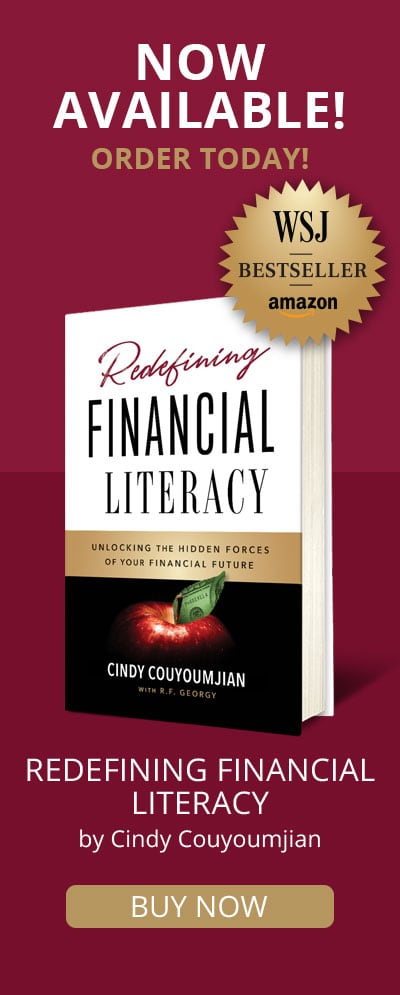Although alternative investment strategies have been used by institutional investors for several decades, they have recently been made available to the average investor. As the name implies, alternative investments are financial assets that do not fall into one of the conventional equity/income/cash categories.1 In other words, alternative investments utilize non-traditional asset classes such as stocks, bonds, or cash. Today, the average investor has access to several alternative asset classes including real estate investment trusts (REITs), business development corporations (BDCs), ETFs, and others. Part of the reason alternative strategies gained popularity is the convergence of two forces: technological change; more specifically computing power, and regulatory changes. Perhaps the most compelling reason to adopt alternative strategies is the 2potentially broken 60/40 portfolio.
The 60/40 Portfolio
The 60/40 portfolio is an investment strategy that utilizes two asset classes where 60% of your money is invested in stocks and 40% in bonds. This idea of spreading your investment across multiple asset classes is derived from the Modern Portfolio Theory (MPT). Developed in 1952 by the Nobel Prize winning economist, Harry Markowitz, the Modern Portfolio Theory argues there is an, “’efficient frontier’ that maps portfolios that earn the highest expected return for a given level of risk.”3 The 60/40 portfolio emerged from this mathematically rigorous theory and worked well for several decades.
Why the 60/40 is no Longer Relevant
What made the 60/40 portfolio a powerful investment strategy is the simple mathematical principle of negative correlation. For example, when stocks move down in value, bonds would move up to protect your investment. In other words, bonds acted as a hedge against the volatility of stocks. This negative correlation worked well for many years until bonds stopped moving in the opposite direction with stocks. This positive correlation, where stocks and bonds move in the same direction, forced Wall Street banks to declare the 60/40 portfolio to be broken and ineffective. In fact, analysts say that, “a traditional 60/40 portfolio will deliver annual returns of 3.5% over the next decade, compared to 10% over the past few decades.”4 This is why an alternative investment strategy is necessary.
Why an Alternative Strategy is Necessary
An alternative strategy is necessary to counteract the sluggish returns of the potentially outdated 60/40 portfolio. Adding alternative asset classes to your portfolio creates diversification which can potentially offer the average investor sustainable returns while managing risk. These alternative asset classes have either low correlation, or no correlation, to traditional stocks and bonds. Alternative strategies have also been widely used by university endowments for decades to generate robust returns that are sustainable for longer time frames.
The Yale Endowment Fund
It may surprise many of you to learn that the driving force behind the success of alternative strategies has long been university endowment funds. Universities, like other large institutional investors, invest their money for the long term. Perhaps the most successful university endowment manager has been David Swensen of Yale University. Swensen took Yale’s endowment fund from $1 billion in 1985 to $29.4 billion in 2018.5 What set Swensen apart from other endowment managers was his early adoption of alternative strategies. Swensen’s investment philosophy is based on the belief that, “the knowledge base that provides useful support for investment decisions knows no bounds. A rich understanding of human psychology, a reasonable appreciation of theory, a deep awareness of history, and a broad exposure to current events all contribute to the development of well-informed portfolio strategies.”6 If large institutional investments, such as endowments, were able to generate above average returns while managing risk, then it is possible to adapt alternative strategies for the average investor.
Correlation, Diversification, and Alternative Investments
 One of the mantras of alternative strategies is diversification. However, diversification alone is not enough. Investors must be aware of correlation risk. In other words, if you invest in multiple asset classes you need to make sure these asset classes are not positively correlated – meaning they move together in the same direction. Alternative strategies involve the selection of asset classes that have little to no correlation to stocks and bonds. Another important feature of alternative strategies is that they are actively managed, as opposed to the 60/40 strategy, which is passively managed. Some alternative asset classes include real estate, private equity and private debt, commodities, and structured products. If you want to gain a more in-depth understanding of alternative strategies, I urge you to read my Wall Street best-selling book, Redefining Financial Literacy.
One of the mantras of alternative strategies is diversification. However, diversification alone is not enough. Investors must be aware of correlation risk. In other words, if you invest in multiple asset classes you need to make sure these asset classes are not positively correlated – meaning they move together in the same direction. Alternative strategies involve the selection of asset classes that have little to no correlation to stocks and bonds. Another important feature of alternative strategies is that they are actively managed, as opposed to the 60/40 strategy, which is passively managed. Some alternative asset classes include real estate, private equity and private debt, commodities, and structured products. If you want to gain a more in-depth understanding of alternative strategies, I urge you to read my Wall Street best-selling book, Redefining Financial Literacy.
1.James Chen, “Alternative Investment,” Investopedia, March 27, 2021. https://www.investopedia.com/terms/a/alternative_investment.asp#
2. Ron Surz, Several Years of Investment Management Innovation,” glidepathwm.com, August 3, 2020.
3. Ron Surz, ”70 Years of Investment Management Innovation,” glidepathwm.com, August 3, 2020. https://glidepathwm.com/investing/70-years-of-investment-management-innovations/
4. Sunny Oh, ”JP Morgan Joins the List of Wall Street Banks Calling for the Demise of 60/40 Portfolio, Despite its Success this Year,” marketwatch.com, July 4, 2020. https://www.marketwatch.com/story/jp-morgan-joins-the-list-of-wall-street-banks-calling-for-the-demise-of-6040-portfolio-despite-its-success-this-year-2020-07-01
5. Drake Bennett, Janet Lorin, et al., “How David Swensen Made Yale Fabulously Rich,” bloomberg.com, September 12, 2019. https://www.bloomberg.com/news/features/2019-09-11/david-swensen-made-yale-fabulously-rich-and-changed-endowments
6. David Swensen, Pioneering Portfolio Management: An Unconventional Approach to Institutional Investment (New York, Free Press, 2009), p.3.





